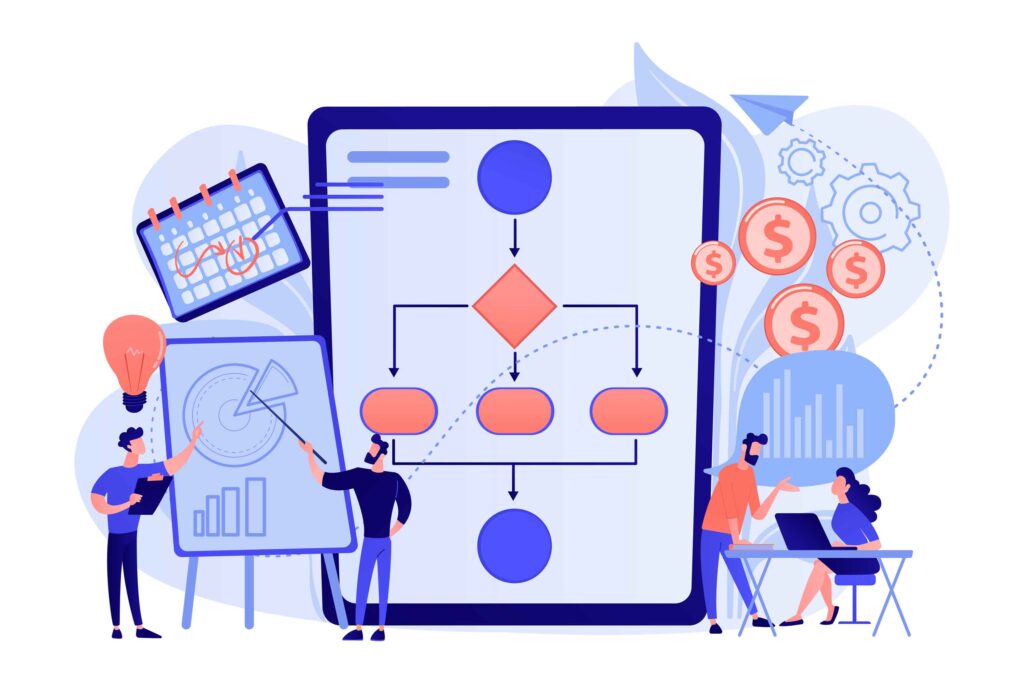
How to use IT Strategy to uncover process improvement.
If you’re like some of our clients, you’ve been a part of conferences or zoom calls and learned about all sorts of new technologies and processes. New ideas are shared to increase productivity and efficiencies in the departments you manage. If you’re working for a shipping company, maybe it’s new trucking or new tracking software that has your attention. Perhaps it’s new lean practices that have you want to implement. We found that excitement quickly turns to overwhelm. The initial enthusiasm starts to dry as uncertainty hits of which project to create, and confusion builds on what the ROI is to the company. Often many of these ideas and opportunities get brushed under the rug until the next conference or zoom call happens.
We’ve helped our clients prioritize these great ideas and projects to bring them to their owners or executives and clearly articulate the ROI and value to the company. How we do this for others is through a tool called the Digital Maturity Assessment (DMA). A digital maturity assessment is a questionnaire that reviews six core pillars of the organization, people processes, platforms, risk, information, and applications. A series of questions are asked, and what of these questions are current state; as in what’s working well or what’s the future state – what needs improvement. For example, one question in the digital maturity assessment is, “We feel our team communicates clearly and adds value to our company clients and vendors.” Is this something that happens current state, or is this a future state? If answered “current state,” then things are working well and great; there’s no need to move forward with any future program at this point. However, if it’s identified as a future state, then there’s some room for improvement. Examples of improving team collaboration, especially in a remote world, are looking at Microsoft Teams and how to better utilize chat, the teams you can create, how to effectively share documents, and add external collaboration. Another example question in the digital maturity assessment is, “Our people can effectively track progress towards projects.” Is that happening current state or future state? Again, if responded to as a current state, excellent, no need to dig in a little further. But if it’s answered future state, there could be some technology, tools, applications, or training that could help improve how you track your progress towards a project. It might look like bringing in some type of automation into the applications or tools you already have. At the end of all these questions and the associated pillars, we ask if you want to make this a strategic priority or not. If answered yes, then it gets tagged as a potential future project to look into further. After the digital maturity assessment, you get a score out of 100 of your total digital maturity based on your responses and a list of all of the strategic priorities you have set. This creates a systematic way of identifying what pillars are essential to your business and need to be further prioritized. After a digital maturity assessment, traditionally, the next step is to move into a road mapping exercise where actual projects are identified to address the strategic priorities that you set. These projects then are calculated with a cost and their impact and value to the organization. After understanding these metrics, you can place these potential projects on a road map. This allows you to have a strategic conversation with your upper management or ownership group, clearly explaining why these projects are essential to your business. Using this digital maturity assessment tool is an effective way to benchmark your success. The first assessment sets a baseline, the total score of 100. After going through a road mapping exercise, identifying potential projects, and then executing them, you should improve your total digital maturity assessment score. You can go through the digital maturity assessment annually to see the impact these projects have had, answering the questionnaire again, and seeing the change in your score.
That solut vCIO facilitates this assessment, but you provide the responses. Our vCIO then asks if you want to engage in a road mapping exercise to truly quantify the impact of the various projects associated with strategic priorities that you set.
